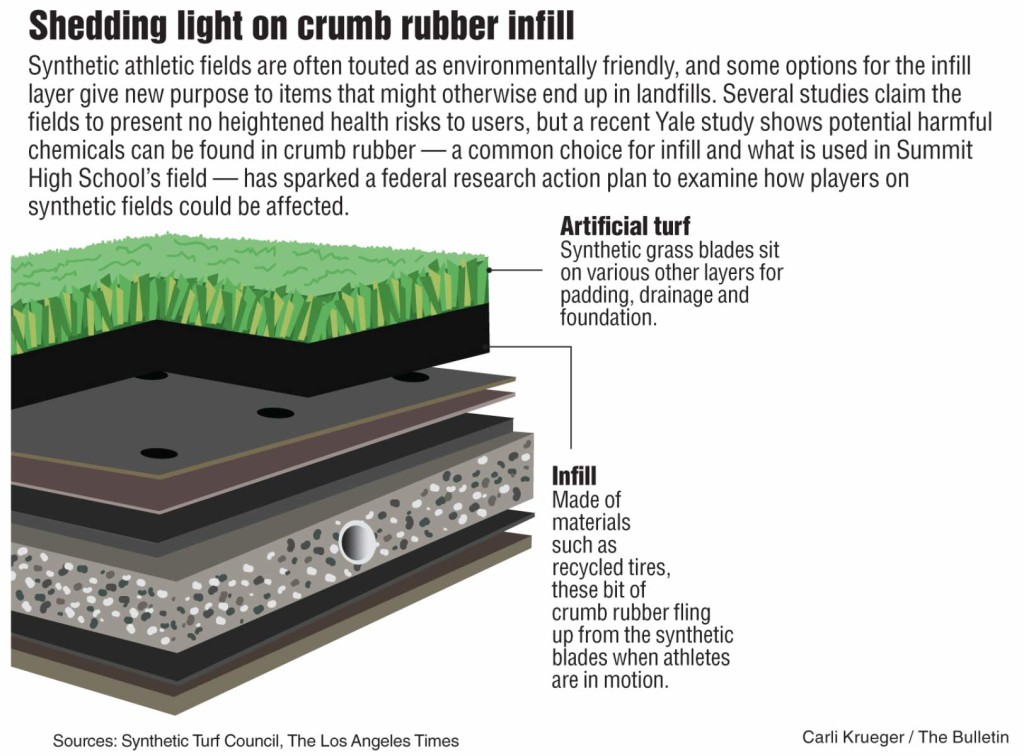Recently the theory that playing on an artificial turf field could increase the risk of cancer has been circulating around in the media and the University of Washington School of Public Health decided to statistically and analytically diagnose this theory with the age group of 5 to 24 year-olds.
The Women’s soccer coach for the University of Washington compiled a list of 30 soccer players that had been diagnosed with cancer between the mid-1990’s and 2015. The coach focused her energy on the idea that exposure to bits of recycled rubber used as infill in synthetic fields had caused the increase in Hodgkin and non-Hodgkin lymphoma cases in goal keepers throughout the above stated timeline. According to Dr. Cathy Wasserman who is the state’s epidemiologist for non-infectious conditions and lead investigator for the study the amount of people in the age range between 5 and 24 that would develop cancer if there was no immediate link between the synthetic turf and the cause of cancer would total to 1,384 soccer players.
which in returned means “We found that the number of cancers among all soccer players reported by the coach was less than expected, given rates of cancer in Washington residents of similar age, even if our observed numbers were higher, they would have had to have been higher by hundreds of cases to have a ratio of observed to expected that was higher than one.” – Wasserman
In another stance a researcher named Dr. Archie Bleyer who is a retired pediatric oncologist in Bend studied the connection between the cancer risk and synthetic fields in California found no increase in the cancer rate from 2000 to 2014, despite the addition of many more synthetic fields. Dr. Bleyer believes that artificial turf fields may prove to have a protective effect against cancer in the long run.
Although he states that the turf does not directly prevent the spread of cancer but the ability to play and exercise all year-round helps tremendously.
To learn more and go to the original news article click on the picture above!





